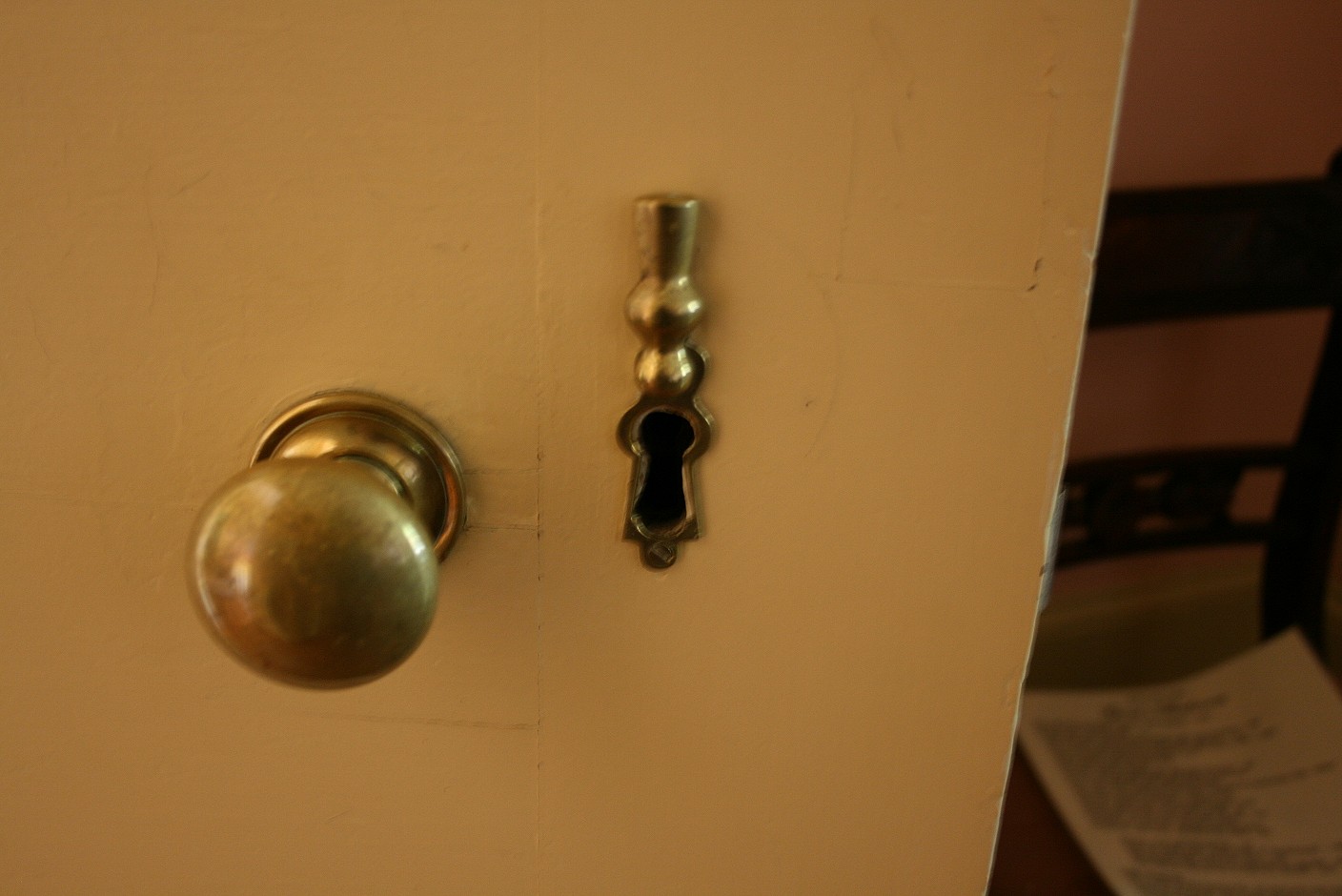Troubleshooting a Locked Bedroom Door

A locked bedroom door without a key can be a frustrating experience. The inability to access your belongings or simply get to your room can be stressful and inconvenient. This situation can arise due to various reasons, such as a jammed lock, a broken key, or a lost key. Identifying the specific problem is crucial to finding the right solution.
Identifying the Problem
The first step is to identify the specific problem with the door lock. A careful examination can help determine the root cause.
- Jammed Lock: If the door handle feels stiff or doesn’t turn smoothly, the lock might be jammed. This could be due to debris, dirt, or wear and tear.
- Broken Key: A broken key stuck in the lock can prevent the door from opening. This often happens when the key breaks inside the lock, leaving a piece lodged inside.
- Lost Key: If you’ve lost your key, you’ll need to find a way to unlock the door without it. This can be a challenging situation, but there are methods to try.
Unlocking a Jammed Door Lock
If the lock is jammed, there are ways to unlock it without damaging the door or lock.
- Lubrication: Apply a lubricant like WD-40 to the keyhole and move the key gently. The lubricant can help loosen the lock mechanism.
- Gentle Force: If the lock is only slightly jammed, try applying gentle pressure to the door handle while turning the key. Be careful not to force it, as this could damage the lock.
- Paperclip: In some cases, a straightened paperclip can be used to try and dislodge any debris blocking the lock mechanism. However, use extreme caution as this can potentially damage the lock.
Preventing a Locked Bedroom Door, Locked bedroom door no key
To prevent a locked bedroom door from happening again, consider these tips:
- Regular Maintenance: Regularly clean and lubricate the door lock to prevent dirt and debris buildup.
- Spare Key: Keep a spare key in a safe and accessible location, such as with a trusted neighbor or family member.
- Door Lock Upgrade: Consider upgrading to a more secure door lock with a keyless entry system. This can eliminate the need for keys entirely.
Security Measures for a Locked Bedroom Door: Locked Bedroom Door No Key

A secure bedroom door is essential for personal safety and privacy. It provides a barrier against intruders, offering a sense of security and peace of mind. A well-secured door can also deter unwanted access from family members or roommates, ensuring a private space.
Types of Locks and Their Security Features
Various lock types offer varying levels of security, each with its unique features. Understanding the strengths and weaknesses of different lock types can help you choose the most suitable option for your bedroom door.
- Deadbolt Locks: These are considered the most secure type of lock for bedroom doors. They have a solid, rigid bolt that extends into the door frame, making it difficult to force open. Deadbolt locks often come with additional features like double-cylinder locks, which require a key to operate from both the inside and outside, and anti-bumping mechanisms that resist lock picking attempts.
- Lever Handle Locks: Lever handle locks are commonly found on interior doors, offering convenience with their simple lever mechanism. However, they are generally less secure than deadbolt locks. Some lever handle locks may have additional features like deadbolt functionality or keyed entry, enhancing their security.
- Smart Locks: Smart locks integrate technology for enhanced security and convenience. They can be controlled remotely via smartphone apps, allowing you to lock and unlock your door from anywhere. Some smart locks also feature features like automatic locking, keyless entry, and integration with home automation systems. While offering convenience, it’s crucial to consider the security implications of relying on technology and ensure the lock is properly installed and maintained.
Upgrading Existing Door Locks
If you’re concerned about the security of your existing bedroom door lock, upgrading it can provide a significant boost in protection.
- Replace Existing Locks with Deadbolt Locks: If your door currently has a lever handle lock, replacing it with a deadbolt lock is the most effective way to enhance security. Choose a high-quality deadbolt lock with features like double-cylinder locks, anti-bumping mechanisms, and solid construction.
- Reinforce the Door Frame: A strong door frame is essential to prevent the door from being forced open. If the door frame is weak or damaged, consider reinforcing it with additional screws or metal plates.
- Install a Security Chain or Door Bar: These devices provide an extra layer of security by preventing the door from opening fully, even if the lock is compromised. Security chains are typically attached to the door frame and allow you to open the door a small amount to see who is outside before fully opening it. Door bars, on the other hand, are placed across the door, preventing it from being opened from the outside.
Deter Potential Intruders
While upgrading your door locks is crucial, additional measures can deter potential intruders from targeting your bedroom.
- Keep Your Bedroom Windows Locked: Intruders may attempt to access your bedroom through windows if the door is secure. Ensure all windows are locked, even if they are high up or appear inaccessible.
- Use Motion Sensor Lights: Motion sensor lights can deter intruders by illuminating the area outside your bedroom window or door when movement is detected. This sudden burst of light can startle potential intruders and make them think twice about attempting to enter.
- Install a Home Security System: A home security system with alarms, sensors, and monitoring services can provide an extra layer of protection. These systems can detect unauthorized entry and alert you or the authorities, deterring intruders and increasing your chances of catching them.
Emergency Access to a Locked Bedroom

In the event of a fire or other emergency, having a plan for emergency access to a locked bedroom is crucial. This plan should be designed to ensure the safety of everyone inside the house, especially those who may be unable to escape on their own. It’s important to consider the possibility that someone might be trapped inside a locked bedroom and unable to open the door themselves. This could be due to a medical emergency, a disability, or simply being unable to reach the door handle.
Emergency Access Options
Providing emergency access to a locked bedroom can be achieved through various methods. It is important to select a method that is appropriate for your situation and ensures the safety and security of your home. Here are some common options:
- Spare Key: This is the most straightforward and readily available option. You can keep a spare key in a secure location outside the bedroom, such as a key box or with a trusted neighbor. This option offers quick and easy access in an emergency. However, it is crucial to ensure the key is kept securely and is not easily accessible to unauthorized individuals.
- Hidden Key Box: This option involves placing a key box in a concealed location, such as behind a picture frame or under a loose floorboard. This method provides a more secure option than leaving a key in plain sight, but it requires some effort to locate the box in an emergency. The key box should be well-hidden and its location should be known only to those who need access.
- Door Hinge Removal: This method involves removing the hinges from the door, allowing access to the bedroom. It requires minimal effort and is a quick solution for emergency access. However, this method can be challenging if the hinges are secured with tamper-resistant screws or if the door is heavy. It is also important to note that removing the hinges may damage the door or the door frame.
- Lock Picking: This method involves using a lock-picking tool to open the door without a key. It is a more advanced technique that requires some skill and practice. While effective in an emergency, it is not recommended for individuals without the necessary expertise. Additionally, attempting to pick a lock can damage the lock mechanism and may require professional repair.
Creating a Safe and Secure Emergency Access Plan
Creating a safe and secure emergency access plan is essential to ensure everyone’s safety in the event of an emergency. Consider these factors:
- Accessibility: The chosen method should be easily accessible and identifiable in an emergency. For example, if a spare key is used, its location should be clearly communicated to everyone in the house. A well-marked hidden key box is another option.
- Security: The chosen method should be secure enough to prevent unauthorized access. For example, a hidden key box should be concealed well and the location should be known only to authorized individuals. If a spare key is used, it should be kept in a secure location, such as a lock box or with a trusted neighbor.
- Simplicity: The chosen method should be simple enough to be used quickly and easily in an emergency. For example, a spare key or a hidden key box is easier to use than a lock-picking tool.
- Communication: It is crucial to communicate the emergency access plan to everyone in the house, including children and guests. Ensure everyone understands the plan and knows how to access the locked bedroom in an emergency.
Scenarios Where Emergency Access is Crucial
Emergency access to a locked bedroom is crucial in various scenarios, including:
- Fire: In the event of a fire, someone might be trapped inside a locked bedroom and unable to escape. Having a plan for emergency access can be the difference between life and death.
- Medical Emergency: If someone experiences a medical emergency, such as a heart attack or stroke, they might be unable to open the bedroom door themselves. Having a plan for emergency access can ensure that help arrives quickly and can potentially save a life.
- Natural Disaster: In the event of a natural disaster, such as an earthquake or a tornado, someone might be trapped inside a locked bedroom. Having a plan for emergency access can help ensure their safety.
